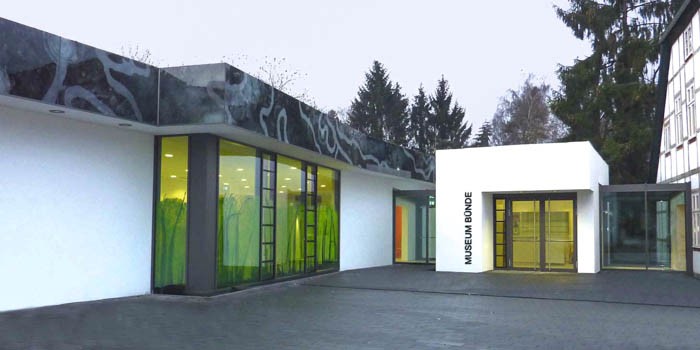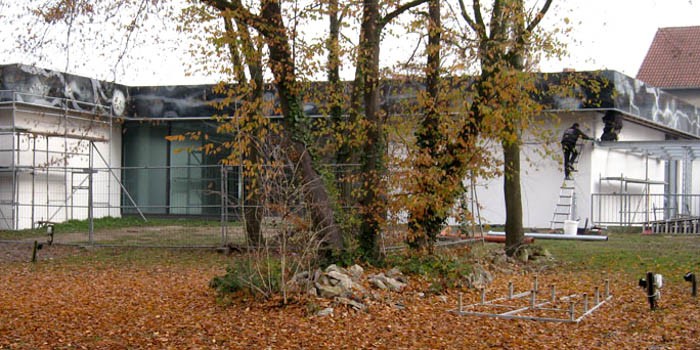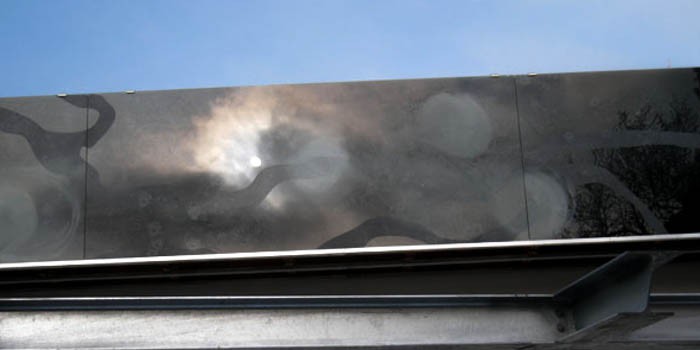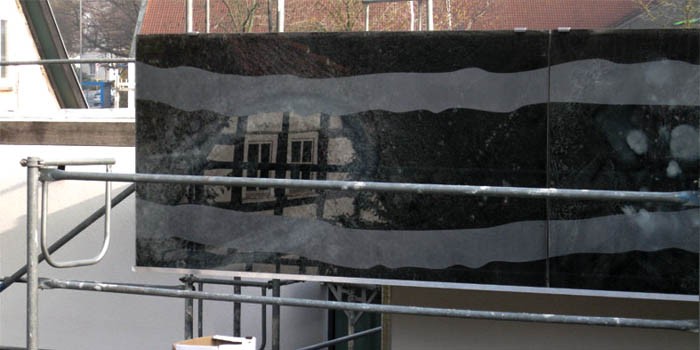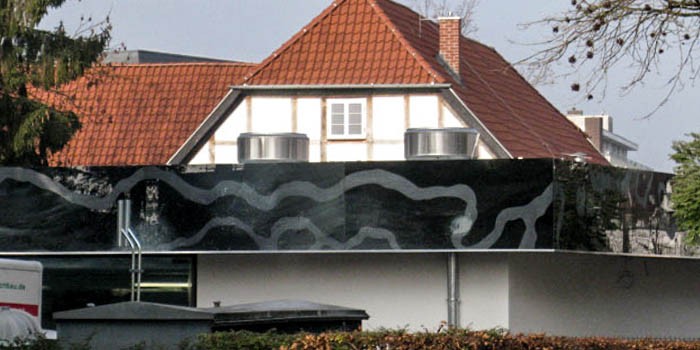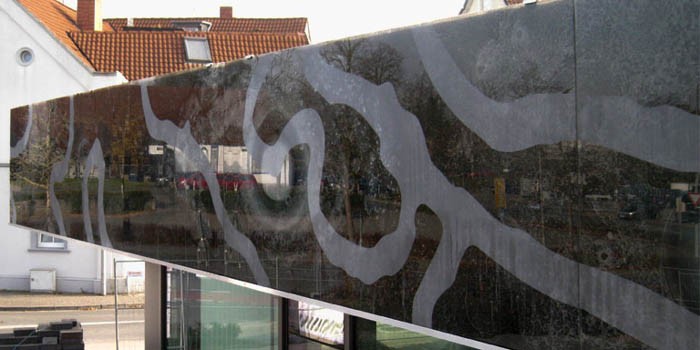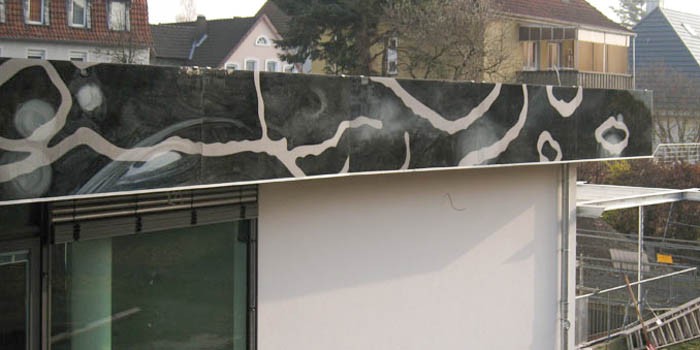Client: City of Bünde
Architects: Katja Flörke + Andreas Krys, Architekten, Bünde
Glass painting: Design by Bernd Fischer, Offenbach/Main
Execution of hand-painting behind glass: Eduard Schizle, Glas und Räume, Paderborn-Neuenbeken and Bernd Fischer
Execution, technical planning and installation: Glasmalerei Peters, Paderborn
Completion: November 2011
Definition of assignment
The collection of the Doberg Museum – Geological Museum in Eastern Westphalia-Lippe – consists mainly of fossil finds from nearby Doberg. As part of the extensive renovation work the architects sought a design for the glass parapet which can be viewed from below, one which harmonized with the architecture and function of the Doberg Museum.
The parapet is approx. 1.16 m high and 125 m long. It surrounds the entire low building at a height of between 3.20 m and 4.50 m.
Artistic solution
Bernd Fischer suggested a hand-painted depiction of “the heart” of our galaxy to be mounted behind glass over the four sides of the architecture. For his design Fischer also suggested a line pattern on the downward-facing side of the glass in order to limit the shininess and reflection of the glass. The lines which would be applied by sandblasting derive from the drawing of Nodosaria albatrossi, a fossil similar to that in the Doberg Museum collection.
Bernd Fischer considered the depiction of cosmic detail to be very fitting for this design task – both in terms of content and aesthetic effect. An almost inconceivably large time frame is thus also inscribed in the visualized galactic space. It stretches back beyond the time when the Doberg Museum exhibits came into being but also conjures up the future.
The fossil motifs make a concrete reference to the collection while, from a design perspective, consolidating the aesthetic structure of the glass painting.
By using these two motifs of extremely different scale Bernd Fischer’s design represents a precise openness. One can draw associations with exhibitions of prehistoric finds as well as present and future themes.
The diversity of the hand-drawn galactic occurrence is an offering for the eyes, as well as a silent invitation to observe and meander around the building.
Execution
Painting behind glass which can be seen from below, with partial sandblasting on the downward-facing side. The design stretches over 50 panes. The highly lightfast and weatherproof ceramic colors are inseparably and permanently merged with the clear glass at a firing temperature of 630 degrees.
All the glass panes have been made into safety glass. Specially made samples were tested on location and matchded to the existing conditions.

Figure: Model for glass painting: The heart of our galaxy, photo mosaic by IRAS/NASA. The middle of the image is also the center of the Miky Way. The two light horizontal rectangles show details of the painting behind glass. More than 300 light years or 2.85 billion kilometers are represented.

Figure: Nodosaria albatrossi, length approx. 2.58 mm.

Figure: The entire drawing of Nodosaria albatrossi over the entire glass painting of the center of the Milky Way (dark strip above the horizintal center line).
